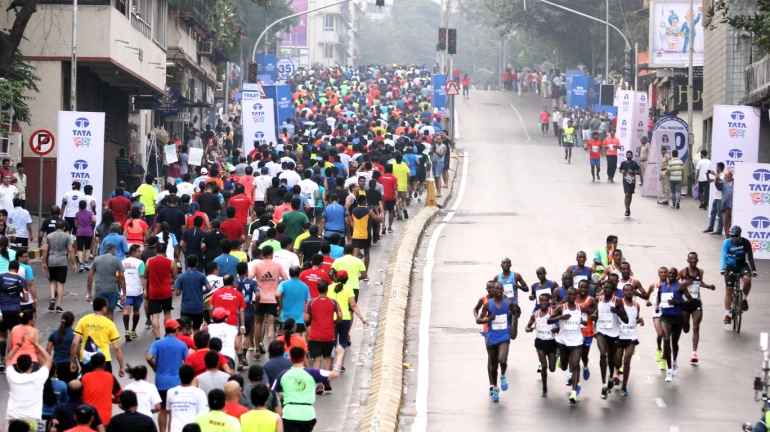
Running a marathon is a significant achievement, and the preparations required to condition your body for those 42 kilometers are not simple.
Many runners, particularly those with less experience, face the risk of injuring their joints and muscles during intense training periods.
“Runners must prioritise injury prevention to ensure they can give their best performance on race day. Incorporating strength training into your marathon training regimen is essential to building resilience in your muscles and joints. Focusing on exercises that target the core, hips, and glutes can help improve stability and reduce the risk of overuse injuries during long-distance running. Paying attention to proper form while running can significantly decrease the likelihood of injuries. Engage your core, maintain a slight forward lean, and ensure your foot lands under your body rather than in front of it to minimize impact on joints. Don't underestimate the importance of rest and recovery. Giving your body time to recuperate between intense training sessions is vital in preventing overtraining injuries such as stress fractures or muscle strains,” highlighted Dr Pramod Bhor, Director of Orthopedics and Robotic Joint Replacement Surgeon, Fortis Hospital, Vashi.
Know how runners at all levels can best ready themselves for a marathon and minimise the risk of injury shares Dr. Sharif Dudekula, Consultant Arthroscopic Surgeon and Sports Medicine Specialist at Medicover Hospital in Navi Mumbai.
Prioritise Strength Training: For individuals new to marathon running, allow approximately a year to prepare for the event. Year-round runners may require around 3-4 months, while those transitioning from a sedentary lifestyle to marathon training may need over 1.5 years. To build the necessary endurance for a 42 km run and the associated training, novice, and casual runners should focus on strengthening specific muscle groups in the core, pelvis, and legs. This can involve weightlifting, resistance band exercises, and isometric movements such as planks, single-leg bridges, or wall sits. Developing this foundational strength is crucial for promoting efficient and low-impact running strides while minimising strain on the hip and knee joints. Establishing a brief pre-run routine is also essential; this may encompass exercises targeting the deep core and gluteal muscles followed by dynamic stretching to maximize muscle flexibility. Post-run recovery should include foam rolling, stretching, and deep tissue massage to expedite muscle recovery and readiness for subsequent runs
Prepare for the Marathon: Training for a marathon requires patience. Giving your muscles and aerobic endurance enough time to adapt to the training load and gradually increase distances and speeds is essential. When pushing yourself in training, muscle breakdown is inevitable during intense efforts. Adequate hydration, nutrition, and rest after challenging workouts are key to optimizing muscle repair and maximizing the benefits of your hard work. To prevent overuse injuries such as stress fractures or tendinopathies (repetitive stress injuries to bones and tendons), it's advisable not to be harsh on yourself. Many runners find success in a pattern of increasing mileage and intensity over a few weeks followed by a week of reduced mileage and intensity. Pushing too hard or running excessive miles can lead to setbacks like overtraining syndrome, which can cause fatigue and declining performance. When you're training, it's crucial to pay attention to your body's signals. If you feel the need for a rest day, take one. If your body is telling you to take it easy while running, listen to it. And if you're unwell, don't hesitate to take extra rest days. It's important to push yourself, but if your muscles are constantly sore and not recovering in time for the next run, it might be time to adjust your level of effort.
Replicate the race experience as much as possible: Since the race will likely take place outdoors, it's ideal to conduct most of your training in an outdoor setting. Running outside allows your body to naturally adapt to the pace and rhythm that suits you best. Additionally, training outdoors exposes you to various environmental factors like wind, rain, and natural changes in terrain. Furthermore, running on softer surfaces like trails can reduce the impact on your joints compared to running on harder surfaces like concrete. If safety permits, opting for roads over sidewalks can also be beneficial for joint health since asphalt is typically less harsh than concrete. By simulating the race experience in your training regimen, you'll be better prepared for the challenges that lie ahead on race day
“It's important to recognise and meet your unique fluid and nutritional requirements, which can be determined through natural training or with the assistance of an expert or nutritionist. Inadequate intake of fluids, electrolytes, and calories during the race can result in premature muscle breakdown, complicating the recovery process. In the aftermath of a marathon, massages, foam rolling, stretching, proper nutrition, and quality sleep all play crucial roles in optimising our potential for rapid recovery,” concluded Dr. Sharif Dudekula.





